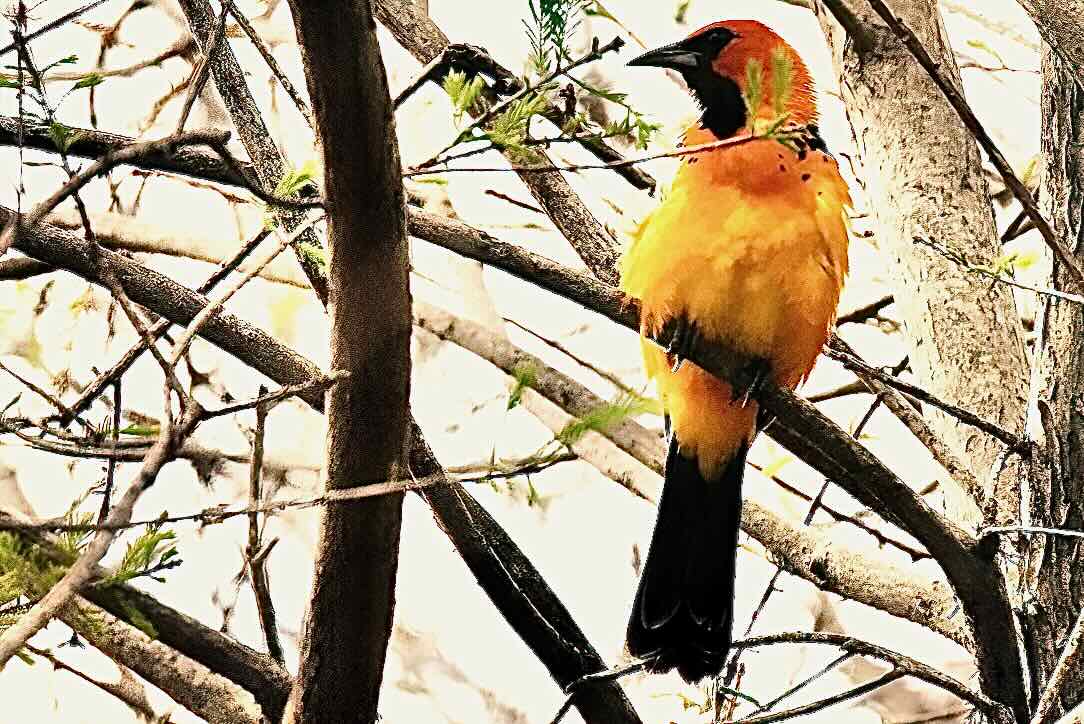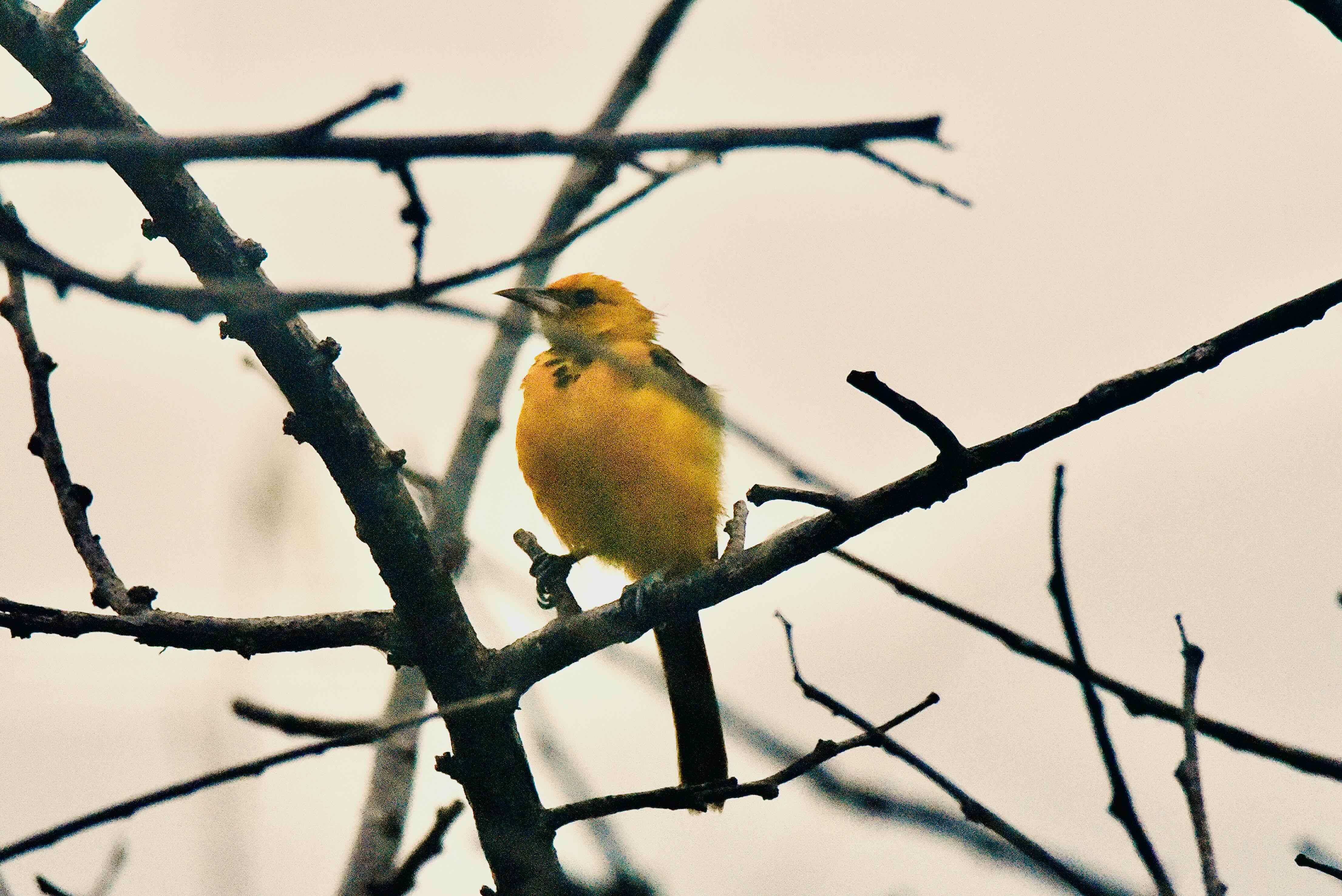
Spot-breasted oriole, photographed at Lake Ida Park, Delray Beach, Palm Beach County, in March 2024.
If ICE had jurisdiction over birds, the spot-breasted oriole, Icterus pectoralis, might be in trouble.*
This stunning black and orange bird is not native to Florida but came to our shores in the late 1940s without so much as a tourist visa, and has stayed ever since, expanding both its range and population ever since.
Of course, birds don't need visas, and ICE has no jurisdiction when it comes to our avian friends, so this beautiful bird can grace our suburbs and woodlands all it wants.
It is without question a beautiful bird, a combination of bright orange underneath and a mix of black, orange and white above. Mature orioles have a long black beard, or bib, their breasts marked with a few black spots. Hence spot-breasted oriole. We should mention here that males and females look alike.
They average-sized as birds go, typically between eight and 10 inches long, roughly the size of a cardinal or robin.
Spot-breasted orioles are native to the central Pacific coast of Mexico and parts of Central America. Florida is the only state in the U.S, where they’re found. The best places to find them in Florida are Palm Beach, Broward and Miami-Dade counties, though there are a few records of them popping up in Polk County (one sighting) and Martin County (eight sightings).
Like many of Florida’s “exotic” residents, exactly how spot-breasted orioles got here is a bit of conjecture. The Florida Fish and Wildlife Conservation Commission says the birds were either escapees from a local aviary or from an import shipment for the pet trade — spot-breasted orioles were once kept as caged birds.
In any case, these undocumented immigrants took a liking to South Florida and spread rapidly, their range reaching seven counties by the 1970s. Cold winters during the 1980s diminished both range and population but the spot-breasted oriole population since has been recovering.
The spot-breasted is one of two oriole species that nest in Florida, the other being the orchard oriole. Breeding surveys that FWC conducted in the late 1980s and into the 1990s found that the spot-breasted orioles nesting from Palm Beach County south into Miami-Dade and that April through August was the primary breeding season.
In its native range, spot-breasted orioles build nests as deep as 18 inches and hang them from tree branches. In South Florida, the nests tend to be much shallower, only about four inches deep. Grasses, palm fibers and other plant material is used to build the nests.
Females lay typically lay three eggs, although the number can range as high as five and as low as two. Females most likely handle incubation duties, although many details are unknown or unclear. Days to hatch, uncertain. Both parents feed their young. Days to fledge, uncertain, although it is likely that the young stick around with their parents for a time after fledging.
A spot-breasted oriole pair can raise two or three broods a season.
So what makes a good meal for a spot-breasted oriole? Bugs, for starters, taken while moving about a tree. They also eat a variety of berries and other fruits, clip the top off some flowers to get to the nectar, but they’ll also eat parts of the flowers themselves.
Spot-breasted orioles are seemingly safe from the threat of extinction, both globally and within Florida. They are members of Icteridae, the blackbird family.
*Inspiration for this comes from Berk Breathed and the ordeal ICE agents put Penguin Opus through for overstaying a tourist visa by 43 years in a July 2025 revival of Bloom County.
Lake Ida Park



